Barrett Martin: "West Africa, that’s where all the mother rhythms come from"
From Screaming Trees classics to Senegalese rhythms, drummer reflects on his eclectic career
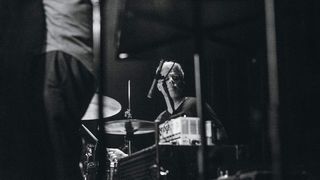
Screaming Trees and Cuban rhythms via Brazil and Africa
In the early 1990s, when grunge swept out of Seattle to take over the world, Barrett Martin was in the thick of it all playing drums for the Screaming Trees on their seminal albums Sweet Oblivion and Dust.
Despite his association with the heyday of Seattle rock, Martin grew up loving jazz and he’s never been content to let his playing be defined by boundaries. Since the late 90s he’s undertaken an extraordinary journey, detailed in his book The Singing Earth, to explore music all around the globe.
He’s studied with master drummers in Senegal, recorded shamanic songs in South America, played Delta blues with CeDell Davis, rocked with Mad Season, Tuatara and Walking Papers, and worked as an LA session musician playing drums, marimba and vibraphone for bands like QOTSA and REM.
Last year he won the Latin Grammy for Best Brazilian Rock Album as producer on Nando Reis’ record Jardim-Pomar. On top of that, he’s a writer for the Huffington Post, an ethnomusicologist, he runs his own label Sunyata Records, and he leads his own Barrett Martin Group. “It’s a mixture of everything I’ve learned about world music and what I know of jazz and a little bit of a rock ’n’ roll,” says Martin.
How did a jazz drummer wind up rocking in Seattle?
“Growing up as a teenager and all through high school I was a total jazz-head. I’d inherited a bunch of records from my grandparents that were big band swing, Count Basie, Duke Ellington, Tommy Dorsey, Glenn Miller. Then in high school in the early 1980s I was really into fusion, Herbie Hancock, Al Di Meola, Miles Davis’ Bitches Brew, Chick Corea.
"Going into college, I was a jazz and classical music major. Of course, I loved rock ’n’ roll simultaneously, but I was playing jazz. When I moved to Seattle, I wasn’t exactly sure what I was going to do. I knew I wanted to do music, but it wasn’t specifically rock ’n’ roll. I just happened to move there in 1987 when everything was starting to go in that direction, I got recruited into a couple of rock bands and then eventually met Jack Endino and Jack put me in Skin Yard.
"Jack really liked the way I played but he actually said to me, ‘If you’re going to play in this band, you have to hit harder so you should probably change your drum stick grip,’ because I was playing with the old traditional jazz grip.
"I switched to matched grip and then it did allow me to hit harder and be able to play rock more aggressively and then I stayed with that technique for the rest of my life, though I still sometimes go back to the old traditional grip just to make sure I still have it.”
You have to find this balance between bottling the lightning and the band’s performance and making it sound as good as possible but not over-producing it…
From the outside, Seattle seemed to be the centre of the musical universe in the 1990s. Did it feel that way to you?
“The funny thing is that when Seattle was the centre of the rock universe, most of our bands were on the road all the time so we weren’t even in Seattle that much. We’d see each other backstage at the Reading Festival or we’d be at the same hotel on the same night and we’d see each other in the bar.
"We knew that Seattle had become this musical mecca, and there was a lot of music going on in Seattle that wasn’t grunge. There was actually a really great experimental jazz scene that is still happening today, and of course hip-hop was coming up at the same time. But it was surreal because when I moved to Seattle in 1987 it was a working class, blue-collar town. Now it’s a totally different place.”
Did playing in the Screaming Trees have a big impact on your life?
“I joined the Trees literally two weeks after Skin Yard broke up. Skin Yard actually opened a couple of shows for Nirvana right as Nevermind was coming out and Nirvana was starting to blow up. When we got back from Europe, Skin Yard had been offered some major label contracts, but we just decided that wasn’t what we wanted to do, and the band had run its course.
"I didn’t really know what I was going to do, and I got a call from Van Conner to see if I wanted to audition for the Trees. The same night I auditioned they offered me the job. The Screaming Trees were signed to a major label, Epic Records, we spent a lot of money making those records and never recouped our royalties, because we had a terrible record contract like most bands do when they sign to a major label. We just stayed on the road and toured to support ourselves.
"It takes a very long time to make any money from record royalties and now with the digital universe and streaming, all these tech companies not really paying royalties, fractions of pennies, which is nothing, you have to stay on the road to make a living. I do think those records are very good.
"Dust was listed as record of the year by several critics and Sweet Oblivion was the more commercially successful of the two. I learned a lot about production, songwriting, and the art of how to make a classic record. The secret to it is that you just work really hard and write really good songs, and then you go into the studio and capture the energy of the songs. A lot of records are over-produced and the fire and the lightning are just snuffed out.
"You have to find this balance between bottling the lightning and the band’s performance and making it sound as good as possible but not over-producing it so that it sounds too slick.”
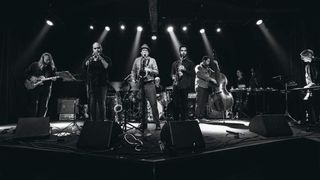
Senegal calls
How did you go from grunge to studying griot drumming in Senegal?
“By ’98 I was starting to take trips and do musical research around the world because as a drummer and percussionist I really loved world music.
"This was also the time when a lot of world music was becoming commercially available on CD, people like Peter Gabriel and other labels were releasing all this great world music and I found that to be much more interesting than a lot of the post-grunge rock that was becoming popular in the late 90s, which I thought was just insipid, terrible music.
West Africa, that’s where all the mother rhythms come from.
"I had been studying with this family of griot master drummers that actually lived between Seattle and Dakar. I was studying at their school in Seattle and they invited me to come back to Dakar, Senegal, to study with their whole extended family and all these master drummers that they worked with. I went to Senegal for a month and then I did some travelling on my own.
"I went to Ghana and took more drum lessons at the University of Legon in Accra. The year after that, 1999, I got invited to go to Cuba as a musical diplomat on an exchange programme called The Music Bridge where they send musicians to other countries to work with their musicians and crate a cultural diplomacy.
"I got to work with some incredible Cuban musicians and play a concert there at the Karl Marx Theatre, which was formerly the Charlie Chaplin Theatre before the Cuban revolution. It was very surreal. After the concert we were invited to the presidential palace and we met Fidel Castro. Then in 2000 I got invited to Brazil to work with this now very famous singer-songwriter named Nando Reis and I’m going down there in a month to work on another record with him.
"I’ve worked with him for 20 years. In the course of about three years I literally did the ABCs, I did Africa, Brazil, Cuba. I had my field recorder with me and I did all this recording of all these rhythms, some of them are sacred religious rhythms, some of them are secular dance rhythms, and it just started a whole new trajectory for me, this non-rock ’n’ roll, very deep exploration into world music. Then I actually continued when I went back to graduate school.”
How did you get to grips with those polyrhythms as a North American who hadn’t grown up in those traditions?
“I just have to say that because I did have formal music training through college, both in jazz and classical, I was already familiar with clavé, and if you learn how to play jazz drums, you learn how to play polyrhythmic stuff anyway. That being said, the complexity of African rhythms is so much more than what I thought.
"West Africa, that’s where all the mother rhythms come from. It’s where Bembe comes from and all these subdivisions and different kinds of clavés, which then move across the Atlantic, settle into the Caribbean and Central and South America and they take on a new life form. I think there is some part of my soul that was wanting to go as deep as I could into the rhythmic world and get away from the rock world that was just starting to get stupid.
"Then in the early 2000s I went back to graduate school to study ethnomusicology with Steve Feld, a very famous American ethnomusicologist. My fieldwork, when I was working on my masters degree, was in the Peruvian Amazon working with a shamanic tribe called the Shipibo, but ironically the Shibipo don’t have any drumming at all.
"Their music is completely acapella, singing shamanic songs, so I did all this research into how they conceive of music, how they represent it in visual designs, and how they weave it into their clothing, how they wear their music for these shamanic ceremonies. I ended up recording an album of their music in a little hut in the Amazon that we rigged up with microphones that I’d brought and recorded about a hundred of these shamanic songs.
"We put about 25 of them on a CD as a benefit for the village called Woven Songs Of The Amazon. Some of them are curing songs that heal and some of them are soundscapes, children singing and things like that. It’s completely the opposite of all the rhythmic studies I did, but that was really good too because it made me think about melody because it’s all vocal.”
“He was the toughest, grittiest human being I’ve ever met” says Martin about the late bluesman CeDell Davis. “I did three records with CeDell, which I put out on my label, played a lot of shows with him and learned a lot about the blues and the American South. That’s the musical form that everything came from - jazz, rock ’n’ roll, R&B, soul, hip-hop, it all comes from the blues.”
That’s a long way from playing grunge in Seattle!
“I know! But truthfully, it’s probably that thing where I grew up in the era of drummer jokes, ‘Drummers are the dumbest one in the band and they can’t write music and they’re just there to provide a beat.’ Are you kidding me?
"I was always inquisitive, in school I was an honour student, I was always kind of intellectual, I just didn’t apply it until I was a little bit older and saw that I could actually do something with that, so maybe part of me wanted to disprove the stereotype. I wanted to go back to what I loved about music, go deeper, and see how far I could go with it.”
Did all this feed into the Barrett Martin Group?
“That’s exactly what it was. I started it my first year of graduate school which was 2004, that’s when I did the first album, which is called The Painted Desert. I had just come back from the Peruvian Amazon from my fieldwork project. The four years prior to that I’d been in Cuba, Brazil, Central America, and Africa was still very prominent in my consciousness, so all of those ideas came together and I made the first Barrett Martin Group record in 2004.
"Then I pretty much made a record every two or three years with different combinations of musicians. At one point I had a Senegalese master drummer from that same family of griots, his name is Thione Diop, he has played on and off with the band but now he’s fully in the band. I would bring in different musicians, upright bassists, guitar players, horn players, keyboard players, but I specifically wanted to make instrumental music.
"My rationale for that is I was starting to compose my own music and I wanted to show that I was not just a drummer or a scholar, but I was a composer, I could put these ideas together and I specifically didn’t want to work with a singer initially because I didn’t want vocals to be the centre point with music as a background. The first time we even played with a singer was on the Artefact album when I worked with that Hindustani singer [Mehnaz Hoosein] who did the female vocals, but even in that situation it’s part of the music, not the main focus.
"I love doing that sort of thing, collaborating with people and having them bring their musical idea into the band. We’re working on our seventh and eighth albums right now, simultaneously. This time I’ve got Kim Thayil of Soundgarden playing with us, because he really loves our new album and he thinks we’re on to something. I was incredibly honoured because Soundgarden was my favourite band of that whole era.”
Do you still enjoy playing rock with Walking Papers, Duff McKagan, and Mike McCready?
“I would just say that I love rock ’n’ roll and I think if you play it authentically with the right people then it’s very rewarding. I spent four years in Los Angeles being a session drummer, where I played on lots of rock records, records by singer-songwriters.
"I played with REM, I played percussion on the Queens Of The Stone Age record, and I played with lots of other people that you’ve never heard of, but it wasn’t satisfying to me. I didn’t want that to be my career. Duff and I did the Walking Papers band, but he and I have since left that project.
"We played on both albums, I co-produced both albums, and we all wrote the songs together, but it’s really Jeff Angell’s thing now. He has a vision of what he wants to do and so we very graciously, happily handed it back to Jeff to make the band what he wants it to be.”
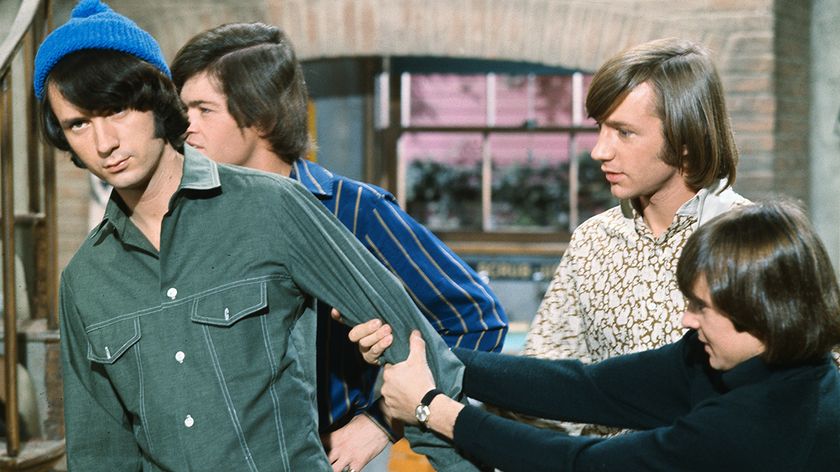
"They said, ‘Thank you, but no thank you - it’s not a Monkees song.’ He said, ‘Wait a minute, I am one of the Monkees! What are you talking about?’": Micky Dolenz explains Mike Nesmith's "frustration" at being in The Monkees

“There’s nights where I think, ‘If we don’t get to Paradise City soon I’m going to pass out!’”: How drummer Frank Ferrer powered Guns N’ Roses for 19 years

"They said, ‘Thank you, but no thank you - it’s not a Monkees song.’ He said, ‘Wait a minute, I am one of the Monkees! What are you talking about?’": Micky Dolenz explains Mike Nesmith's "frustration" at being in The Monkees

“There’s nights where I think, ‘If we don’t get to Paradise City soon I’m going to pass out!’”: How drummer Frank Ferrer powered Guns N’ Roses for 19 years

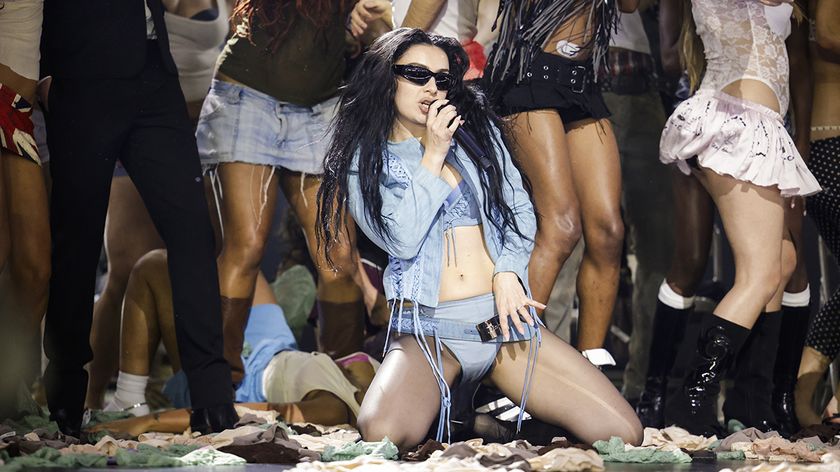
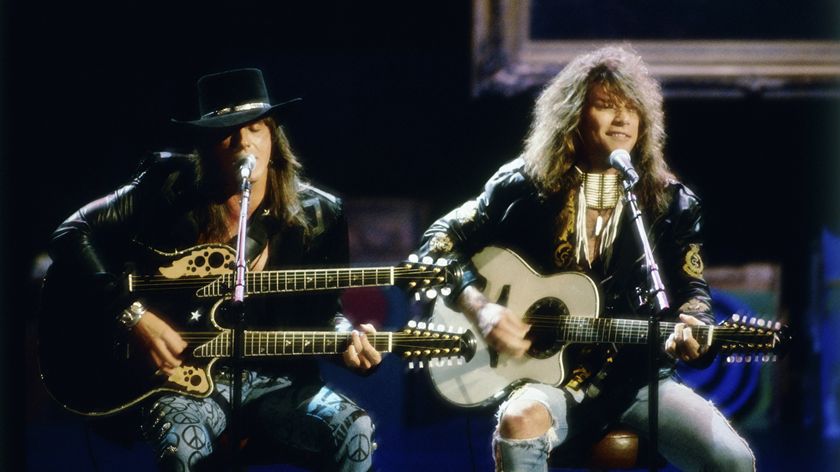
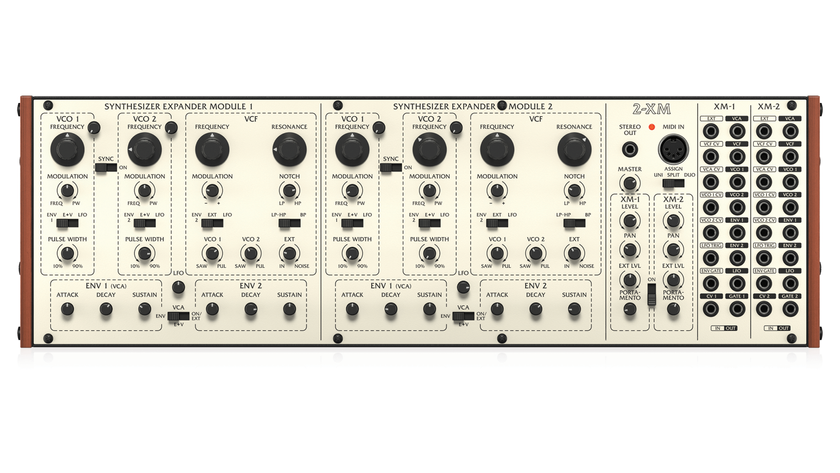
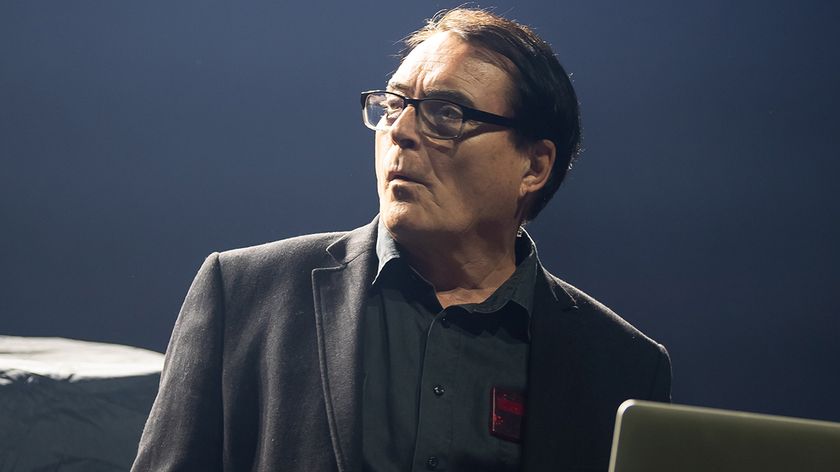
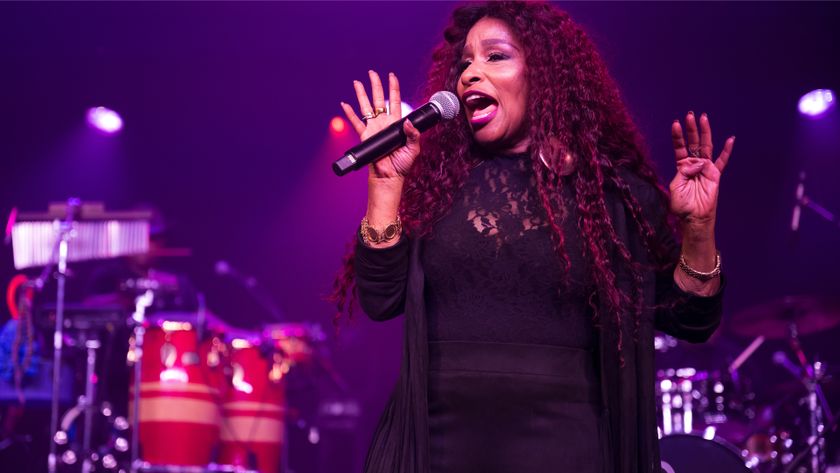
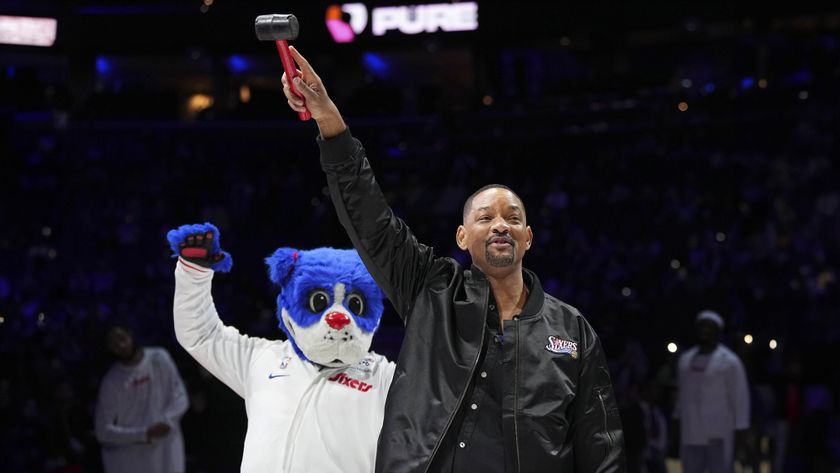


![Chris Hayes [left] wears a purple checked shirt and plays his 1957 Stratocaster in the studio; Michael J. Fox tears it up onstage as Marty McFly in the 1985 blockbuster Back To The Future.](https://cdn.mos.cms.futurecdn.net/nWZUSbFAwA6EqQdruLmXXh-840-80.jpg)